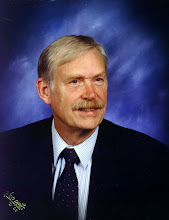My ninth book, Ploughshares into Swords, is about WWII—how civilians and California Institute of Technology (Caltech) helped win the war. A friend of mine was also a friend of several Caltech physicists during and after the war. She supplied part of the information I used. One of her special friends was physicist Carl Anderson, who discovered anti-matter.
My friend and I were talking about scientific achievements that she knew about almost first hand. She observed that I understood what had been accomplished and that perhaps I could have kept up with these Nobel scientists had I been in their fields. I knew this wasn’t true, but I certainly wasn’t going to say so. Anyway, as I was writing about the physicists and discovered what they did as kids, I realized I had done many of the same things. But I also had become a licensed Amateur Radio (Ham) operator at an early age.
So as I wrote, I thought about being a Ham again and wondered if it were too late. I had not been licensed since 1954. In January of 2008 I took all the tests and passed them. Now Ham radio is cutting into my writing time.
Writing Ploughshares was work, but it was also fun, remembering the past and the hardships and comparing people’s attitudes then with attitudes today. I concluded that we are among a lot of dainty whiners in America.
Choosing the title from the Bible, where it talked about beating swords into ploughshares because it was a time for peace, I found of course WWII was a time for doing the opposite—taking scrap metal and forging it into guns, tanks and ammunition.
Writing Ploughshares was a trail of discovery as I learned new things about the atomic bomb, about the way that Caltech became a rocket factory and how Caltech built the China lake facility. No, I am not talking about Jet Propulsion Laboratory, either. I am talking about dry powder rockets fired from airplanes. There was enough fuel for those rockets stored around the area to blow Pasadena, CA off the map.
It is not my practice to write about the commonplace. I have no capacity or patience for it. So I wrote about secret or little-known facts that only friends of physicists at the time could know. In the process, I came to admire Caltech and its growth from rags to riches. I came to admire the practical physicists and administrators who shared a common vision and caused that growth. Now Caltech is synonymous with rocket science, cosmology and many other exotic fields. In a way I saw it happen.
While writing about world politics leading up to WWII, I had the opportunity to revisit the foreign and domestic policies of President Franklin Roosevelt. As writer with a background in economics, I found myself critiquing the seven lean years of the Roosevelt administration when he compounded the economic misery of the United States. In these days, I am seeing a new edition of the Roosevelt plan unfolding, so when I get back to writing on this web site I am very likely to comment on repeating mistakes of the past. But right now, I have to sell a few books and finish my tenth book.
“What is my tenth book about?” you ask. Well, during the Space Race with the USSR, the US had a space medicine scientist in Russia at its secret Baikonur launch site, courtesy of Premier Khrushchev (& Brezhnev). It is a deep, dark secret in both countries, but with reluctant help from NSA, CIA, NASA, and the Department of State, I am slowly putting the story together. Many “experts” have written that this did not happen, so my tenth book will be controversial. But I knew the NASA scientist who spent almost ten years going back and forth from the US to the USSR, making friends with Soviet cosmonauts and Soviet scientists, and helping them stay alive in micro-gravity conditions.
There is a great deal to write about, and the Agony of Writing continues despite adventures in a very vibrant hobby called Ham Radio.
The book? Oh, it is paperback, about 6X9 inches with around 324 pages and an index. It is for sale by Amazon and most dot com book stores. I can be Googled and so can my book.
Sincerely,
Tom, AA6TF

No comments:
Post a Comment